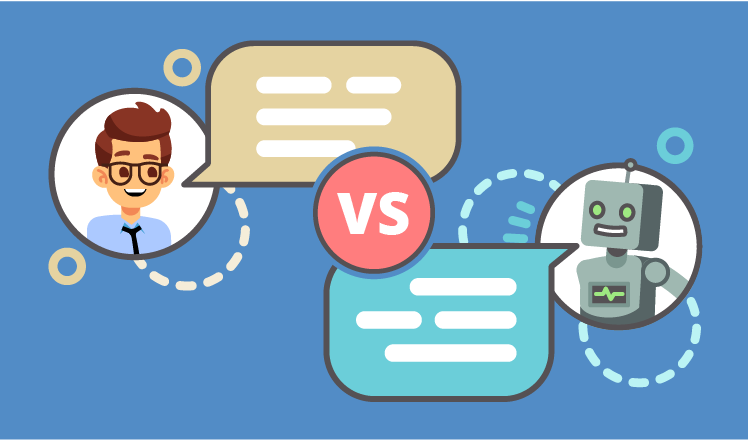Live chats vs. chatbots: Who proffers better customer experience
Online chat support boasts an outstanding 73% customer satisfaction rate. Compare it with email support (60%) and phone support (43%), and you can understand why more and more businesses choose website chat support as their primary touch point.
Every business knows that the customer is king. If you don't provide an exhilarating experience to your client, they will simply turn to your competitor instead. Moreover, in the age of social media, even a single unsatisfied customer can create a considerable dent in your brand image, goodwill, and, ultimately, your revenue. That's why customer experience consulting on choosing right customer management tools is important.
One of the most frequent challenges faced by consulting experts is a live chat vs. chatbot dilemma. Is it necessary to have a living person available for a chat interaction, or can a chatbot do a similar or even better job? To find out, we weigh the advantages and disadvantages of live chats and chatbots alike from the perspective of both customers and business owners.

Why live chats?
A live chat for a website is a powerful way of providing fast and quality support to customers. It is suitable not only for the after-sales customer support and complaint helpdesk but also for assisting users in their purchase journey. Let's look at the benefits of having human live chat representatives on board.
-
The human touch
For customers, there's always something reassuring and enjoyable in getting attended to by a real person. A whopping 80% of customers say that they would prefer chatting with a human live chat representative instead of a chatbot. Sometimes, offering care and sympathy makes more for boosting customer loyalty that just 'logic', and it's live chat representatives who can show these emotions. Sadly, you can't teach a chatbot to be emotional yet.
-
Understanding complex queries
Most people tend to formulate their queries in a natural, unstructured language, often filled with slang and mistakes. A human live chat representative will understand the intent and hold a meaningful conversation regardless.
Chatbots are still not able to do this. Though there have been breakthroughs in the Natural Language Processing (NLP) and Artificial Intelligence arena, context understanding remains a distant dream for bots. To understand a vague query and provide a decent answer, a chatbot will have to ask a user a chain of follow-up questions, which can lead to slower response time, cause inconvenience, and, eventually, hamper your customer experience.
Why chatbots?
Nowadays, more and more companies want to set up chatbot-based customer support on their business web apps and websites. And this ambition is quite reasonable.
-
No training necessary
Chat executives have to be trained thoroughly before they can start answering customer queries. This training usually comprises several modules, including training on chat software, organization, functional area, scripts, flowcharts, and much more.
Needless to say, employee training is cost-intensive and not a one-time thing. You need to have recurring training to keep your team's knowledge up-to-date. Moreover, you will have to offer new learning sessions in case of switching to new live chat software, introducing a new product, or changing the script. Chatbots save you from this hassle, since their knowledge base is extended with the help of machine learning algorithms.
-
Round-the-clock availability
Humans take vacation time, go on sick leaves, and, most importantly, sleep. In addition, they can't offer consistent 100% productivity. From a business's perspective, it makes sense to seek avoiding these pitfalls.
Unlike people, chatbots can attend to user queries 24/7 with consistently high efficiency and accuracy even if dealing with global customers in different time zones.
-
Ability to handle multiple chat interactions simultaneously
Usually, humans can't handle more than 2 or 3 customer chat interactions at once. Switching between too many chat windows may lead to inaccurate answers or slow response time. Chatbots, however, don't have such limitations and can competently talk to multiple customers at once.
-
High accuracy and stability
Despite the capability to understand natural language and complex queries in a much better way than bots, humans can't always provide correct responses. Human error can be minimized with adequate training and practice, but can't be eliminated entirely. On the other hand, chatbots will keep the same level of accuracy every time they answer a particular query.
So, a live chat or a chatbot?
The solution that would ensure the best customer experience is a mixed-approach. Let chatbots handle the basic tasks (like taking simple orders, handling B2B inquiries, booking flights or hotels, etc.), and escalate complex requests that a chatbot can't understand to their human counterparts. This way, you'll have the best of both worlds.


